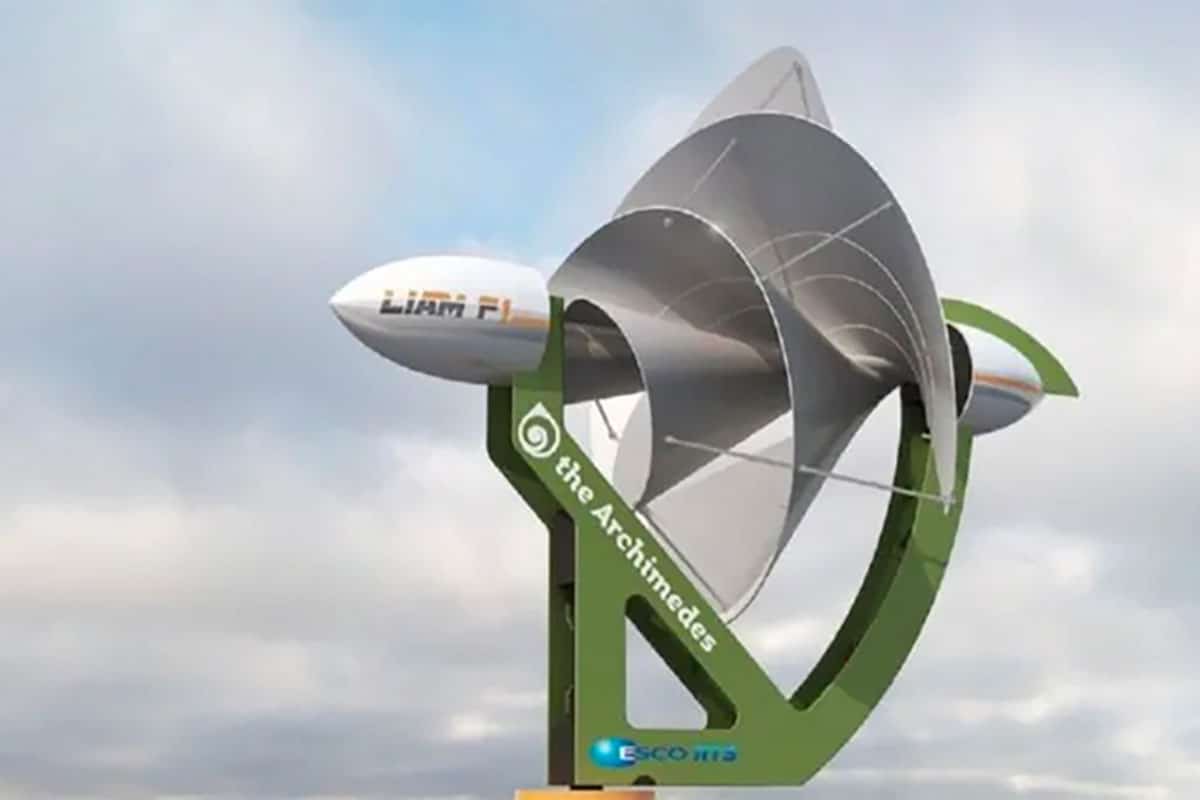Silent Residential Wind Turbine Challenges Solar Panels in Global Renewable Energy Market
October 6, 2024

In the ever-evolving landscape of renewable energy, a groundbreaking innovation has emerged from the Netherlands, challenging the dominance of solar panels. The LIAM F1 UWT, a silent residential wind turbine, is making waves in the global market for clean energy solutions.
Revolutionary wind power for urban environments
The LIAM F1 UWT represents a significant leap forward in urban wind energy technology. Designed specifically for residential use, this compact turbine offers a unique solution to the challenges of harnessing wind power in densely populated areas. Unlike traditional wind turbines, which often face opposition due to noise pollution, the LIAM F1 UWT operates silently, making it ideal for urban settings.
Key features of the LIAM F1 UWT include :
- Compact size : 1.5 meters in diameter
- Lightweight design : under 100 kg
- Noise-free operation
- Inspired by Archimedes’ spiral
- Ability to capture low and irregular winds
This innovative design allows the turbine to adapt to changing wind directions, maximizing its energy efficiency even in challenging urban environments. The LIAM F1 UWT’s ability to harness light breezes that circulate between buildings makes it a versatile option for homeowners and businesses alike.
Comparing wind and solar energy solutions
While solar panels have long been the go-to choice for residential renewable energy, the LIAM F1 UWT offers a compelling alternative. To better understand how these technologies stack up, let’s examine their key characteristics :
| Characteristic | LIAM F1 UWT | Solar Panels |
|---|---|---|
| Energy Source | Wind | Sunlight |
| Space Required | Minimal (roof-mounted) | Larger surface area |
| Noise Level | Silent | Silent |
| 24/7 Operation | Yes (wind dependent) | No (daylight only) |
| Average Annual Output | 1,500 kWh | Varies (location dependent) |
While the LIAM F1 UWT boasts impressive capabilities, it’s important to note that its annual output of 300 to 2,500 kWh covers approximately half of an average household’s energy consumption. This suggests that combining wind and solar technologies may offer the most comprehensive solution for those seeking to achieve 100% sustainable energy independence.
Netherlands : a hub for wind energy innovation
The Netherlands’ emergence as a leader in wind energy technology is no coincidence. The country’s flat terrain and consistent wind patterns create ideal conditions for harnessing wind power. This natural advantage, combined with progressive government policies promoting renewable energy development, has fostered a climate of innovation in the wind energy sector.
Dutch initiatives in wind energy include :
- Large-scale offshore wind farms
- Rural wind energy projects
- Urban-focused innovations like the LIAM F1 UWT
The country’s commitment to reducing fossil fuel dependence has driven the development of technologies like the LIAM F1 UWT, which address the unique challenges of urban energy production. This focus on adaptable, small-scale solutions demonstrates the Netherlands’ holistic approach to the global energy transition.
Shaping the future of urban energy
As cities worldwide grapple with the urgent need to reduce carbon emissions, innovations like the LIAM F1 UWT offer a glimpse into the future of urban energy production. By providing a silent, compact, and efficient alternative to traditional renewable energy sources, this technology opens up new possibilities for integrating clean energy solutions into the fabric of city life.
The potential impact of widespread adoption of such technologies is significant. Imagine a cityscape where rooftops are dotted with silent wind turbines, working in harmony with solar panels to power homes and businesses. This vision of decentralized, sustainable energy production could revolutionize urban planning and significantly reduce cities’ carbon footprints.
As the global community continues to seek innovative solutions to combat climate change, technologies like the LIAM F1 UWT serve as a reminder that the path to a sustainable future may be paved with diverse and complementary approaches. The silent residential wind turbine’s emergence as a formidable competitor to solar panels underscores the importance of continued innovation and adaptation in the renewable energy sector.
Search
RECENT PRESS RELEASES
Related Post




